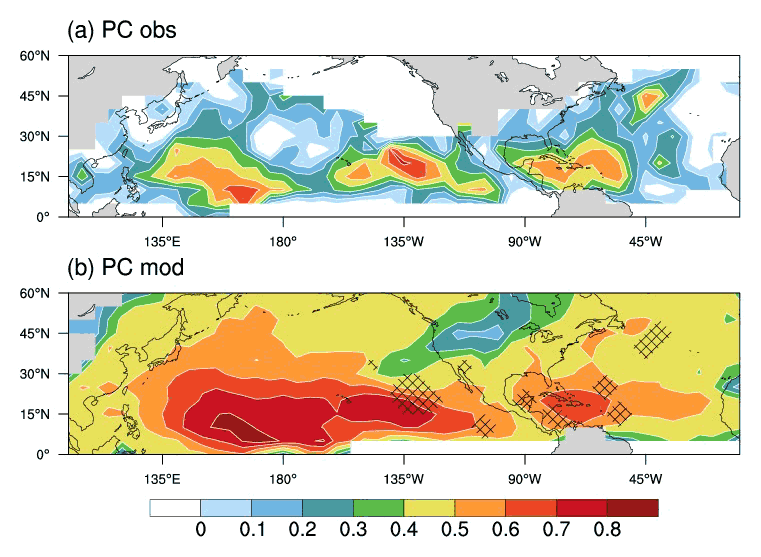May 17th, 2019
Key Findings
- A robust analysis reveals when and where the seasonal prediction of tropical cyclone activity is skillful
- Predictability for tropical cyclone activity is lower in the extratropics and the coastal region
- The lower predictability is largely related to the atmospheric environment rather than the sea surface temperature
- In particular, the uncertainties of initial conditions affect the predictions and the skill evaluation significantly
- Improvements of seasonal prediction will require atmospheric variability to be better constrained, especially when the prediction lead time is short
Gan Zhang, Hiroyuki Murakami, Rich Gudgel, and Xiaosong Yang. Geophysical Research Letters. DOI: 10.1029/2019GL082529
Dynamical seasonal prediction systems have recently shown great promises in predicting tropical cyclone activity. GFDL’s Forecast–oriented Low Ocean Resolution (FLOR) model (Vecchi et al. 2014) provides experimental predictions to National Centers for Environmental Prediction (NCEP) each month as part of the North American Multi-Model Ensemble (NMME) project. The current study analyzes this state-of-the-art prediction system and offers a robust assessment of when and where the seasonal prediction of tropical cyclone activity is skillful.
In particular, the uncertainties of initial conditions affect the predictions and the skill evaluation significantly. The sensitivity of predictions to initial conditions also suggests that landfall and high-latitude activity are inherently harder to predict. The lower predictability is consistent with the relatively low prediction skill in these regions.
Additionally, the lower predictability is largely related to the atmospheric environment rather than the sea surface temperature, suggesting further improvements of seasonal prediction need to consider how to better constrain the atmosphere variability during the simulation. Refining the model initialization will likely improve predictions, especially when the prediction lead time is short. These findings highlight the potential for improving seasonal TC prediction and will help the development of the next-generation prediction systems.
Our analysis offers detailed skill information on the seasonal TC prediction, which is valuable for decision-makers who manage TC risk. The skill evaluation issue highlighted in the study will help refine the assessment of future models. Finally, the predictability analysis will also help the development of the next-generation prediction systems.



